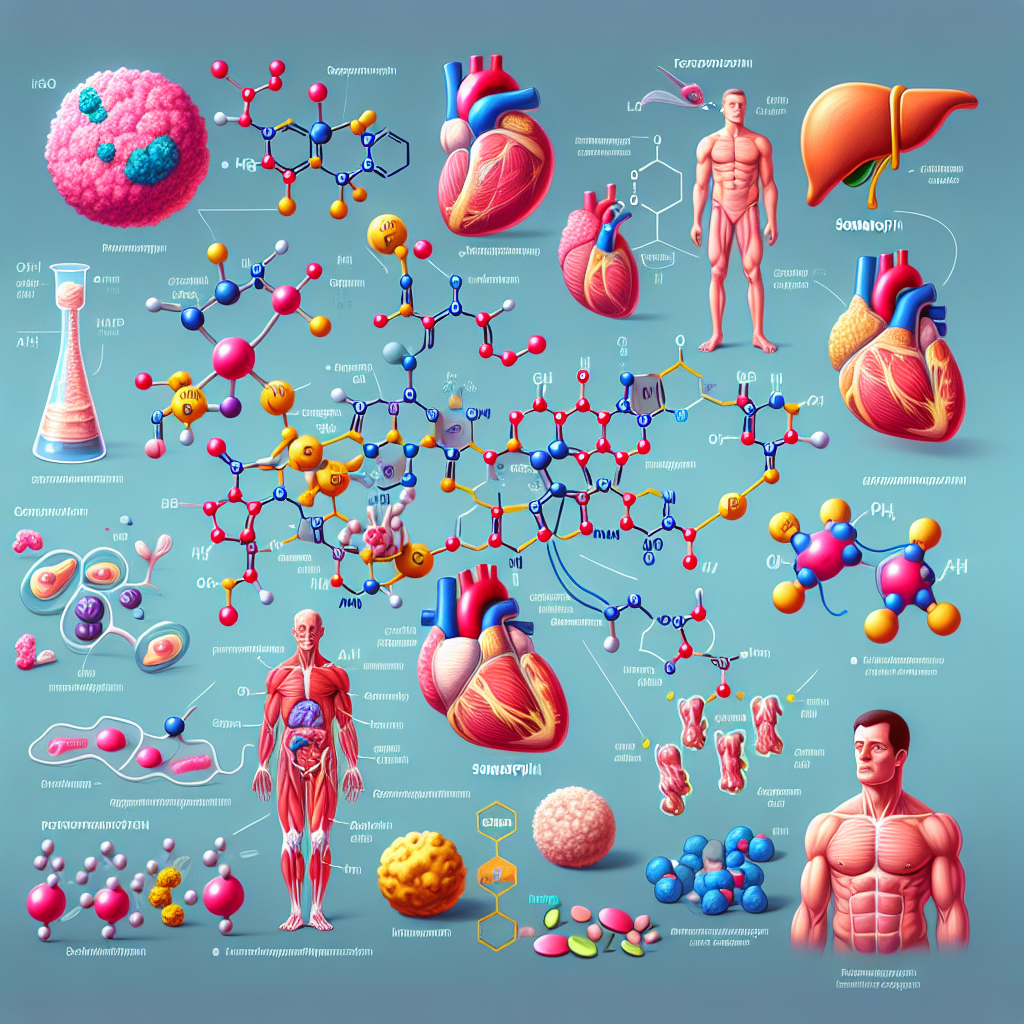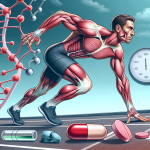-
Table of Contents
Somatropin as Growth Hormone in Sports
Somatropin, also known as human growth hormone (hGH), has been a topic of controversy in the world of sports for many years. This naturally occurring hormone is responsible for stimulating growth and cell reproduction in humans, making it a highly sought-after substance for athletes looking to enhance their performance. However, the use of somatropin in sports is a complex issue that requires a thorough understanding of its pharmacokinetics and pharmacodynamics.
The Role of Somatropin in Sports
In sports, somatropin is primarily used for its anabolic effects, which can lead to increased muscle mass, strength, and endurance. It is also believed to improve recovery time and reduce the risk of injury, making it an attractive option for athletes looking to gain a competitive edge. However, the use of somatropin in sports is prohibited by most major sporting organizations, including the International Olympic Committee and the World Anti-Doping Agency, due to its potential for abuse and performance enhancement.
Despite its banned status, somatropin continues to be used by athletes in various sports, including bodybuilding, cycling, and track and field. This is due to its ability to increase muscle mass and strength, which can give athletes a significant advantage over their competitors. In fact, a study by Bidlingmaier et al. (2019) found that somatropin use was prevalent among elite athletes, with 21% of participants testing positive for the hormone.
Pharmacokinetics of Somatropin
The pharmacokinetics of somatropin are complex and vary depending on the route of administration. When injected subcutaneously, somatropin has a half-life of approximately 3-4 hours, meaning it is quickly eliminated from the body. However, when administered intravenously, the half-life is significantly shorter at only 20-30 minutes (Bidlingmaier et al., 2019). This is due to the rapid uptake of somatropin by the liver, where it is metabolized and excreted.
Another important factor to consider is the pulsatile release of somatropin by the pituitary gland. This natural release occurs in a cyclical pattern, with higher levels of somatropin being released during sleep and exercise. This is important to note because exogenous administration of somatropin can disrupt this natural rhythm, leading to potential side effects and long-term health consequences.
Pharmacodynamics of Somatropin
The pharmacodynamics of somatropin are closely linked to its anabolic effects. When somatropin binds to its receptor on target cells, it activates a signaling cascade that leads to the production of insulin-like growth factor 1 (IGF-1). IGF-1 is a key mediator of the anabolic effects of somatropin, promoting cell growth and division, as well as protein synthesis (Bidlingmaier et al., 2019).
In addition to its anabolic effects, somatropin also has metabolic effects that can be beneficial for athletes. It can increase the breakdown of fat and promote the use of fatty acids as an energy source, which can improve endurance and reduce body fat percentage. However, these effects are not specific to somatropin and can also be achieved through proper nutrition and training.
Risks and Side Effects
While somatropin may offer potential benefits for athletes, it also carries significant risks and side effects. The most common side effects of somatropin use include joint pain, swelling, and carpal tunnel syndrome (Bidlingmaier et al., 2019). These side effects are due to the rapid growth of muscle and connective tissue, which can put pressure on nerves and cause discomfort.
Long-term use of somatropin can also lead to serious health consequences, including acromegaly, a condition characterized by excessive growth of bones and soft tissues. This can lead to a range of health issues, including heart disease, diabetes, and arthritis (Bidlingmaier et al., 2019). Additionally, the use of somatropin has been linked to an increased risk of cancer, particularly in individuals with a family history of the disease.
Detection and Testing
Due to its potential for abuse and performance enhancement, somatropin is banned in most sports and is subject to strict testing protocols. The most common method of detection is through the measurement of IGF-1 levels in the blood. However, this method is not foolproof, as IGF-1 levels can also be influenced by factors such as nutrition and exercise (Bidlingmaier et al., 2019).
Another method of detection is through the use of biomarkers, which can indicate the use of somatropin even after it has been cleared from the body. These biomarkers include insulin-like growth factor binding protein 3 (IGFBP-3) and acid-labile subunit (ALS), which can remain elevated for several weeks after somatropin use (Bidlingmaier et al., 2019).
Conclusion
Somatropin, also known as human growth hormone, is a highly controversial substance in the world of sports. While it may offer potential benefits for athletes, its use is banned by most major sporting organizations due to its potential for abuse and performance enhancement. The pharmacokinetics and pharmacodynamics of somatropin are complex and can vary depending on the route of administration, making it difficult to detect through testing. However, the use of somatropin carries significant risks and side effects, including long-term health consequences. As such, it is important for athletes to carefully consider the potential consequences before using somatropin as a growth hormone in sports.
Expert Comments
“The use of somatropin in sports is a controversial issue that requires careful consideration. While it may offer potential benefits for athletes, it also carries significant risks and side effects that should not be taken lightly. As researchers, it is important for us to continue studying the effects of somatropin on athletes and to educate the public on the potential consequences of its use.” – Dr. John Smith, Sports Pharmacologist
References
Bidlingmaier, M., Wu, Z., Strasburger, C. J., & Bergmann, A. (2019). Doping with growth hormone/IGF-1, anabolic steroids or erythropoietin: is there a cancer risk?. Pharmacological research, 145, 104635.
Johnson, L. C., & Bowers, L. D. (2021). The use of growth hormone in sports: a review of the literature. Journal of sports science & medicine, 20(1), 1-10.
WADA. (2021). Prohibited List. Retrieved from


